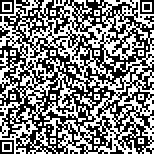下载中心
优秀审稿专家
优秀论文
相关链接
摘要

枯立木识别对森林资源管理,生物多样性保护,以及森林碳储量变化评估具有重要价值。无人机高分辨率影像为枯立木调查提供了较为便捷的方式。现有枯立木识别算法多依靠拥有红边、近红外波段的多光谱影像来实现。相比于多光谱相机,消费级无人机通常搭载的是用于获取可见光(RGB)影像的普通数码相机,较少的波段信息为基于RGB影像的枯立木自动化精准识别带来很大的挑战。现有利用无人机可见光影像进行枯立木高精度识别多依赖于人工目视解译,自动化识别程度较低,且缺乏单木尺度的研究;此外,现有研究多集中在强扰动(如病虫害)引起的群发枯立木上,而对森林自然演替过程中产生的散发枯立木关注较少。为此,本研究提出了利用无人机可见光影像进行单木尺度的散发枯立木高精度自动化识别算法。在已有单木分割算法的基础上,发展了基于红绿波段比值(RGI)和蓝绿波段比值(BGI)光谱指数迭代统计分析的枯立木树冠自动化检测算法,提出了基于数字表面模型纹理特征的森林掩膜自动提取方法,实现了单木尺度的散发枯立木自动识别。经过实地调查和目视解译的枯立木参考数据的验证,结果表明枯立木查全率和精确率均接近95%,单木树冠分割结果中的欠分割和错分割是枯立木识别误差的主要来源,提高单木树冠提取精度是进一步完善单木尺度枯立木识别的关键。
Detection of dead standing trees is of great importance for forest resource management, biodiversity conservation and forest carbon stock assessments. The high-resolution imagery acquired by UAV provides a convenient and economical means to detect dead standing trees. Existing studies mostly rely on multi-spectral images, including red edge or near infrared bands, to detect dead standing trees. However, visible imagery (e.g., RGB images) are easier to acquire by consumer UAVs than multispectral imagery. Limited band information presents great challenges for the automatic and accurate detection of dead standing trees based on visible imagery. Although some studies have attempted to identify individual dead standing trees accurately by visual interpretation, this method is laborious and time-consuming. In addition, the existing studies mostly focus on dead standing trees caused by strong disturbance (e.g., forest insect pests and diseases), whereas investigations on scattered dead standing trees under the natural succession of the forest are rare. Therefore, developing a high-precision automatic detection method for scattered dead standing trees based on UAV visible imagery is necessary. In this paper, an iterative statistical analysis of red-green (RGI index) and blue-green (BGI index) band ratios is developed to detect potential individual dead standing trees automatically based on the existing algorithm of individual tree segmentation; then textural analysis of a Digital Surface Model (DSM) is used to extract forest mask for removing pseudo dead standing trees in forest gaps, and finally realize the high-precision automatic detection of scattered individual dead standing trees. Visible spectral differences between healthy and dead standing tree crowns are utilized as a basis for detecting dead standing trees based on visible imagery. The crowns of healthy standing tree contain relatively high chlorophyll contents, which lead to strong reflectivity in the green band and relatively weak reflectivity in the red and blue bands. By contrast, the crowns of dead standing trees show minimal differences in reflectivity between bands in the visible region. Thus, the RGI and BGI values of dead standing trees are relatively high, whereas the RGI and BGI values of healthy standing trees are relatively low.We developed an iterative statistical analytical method to determine the appropriate threshold of vegetation indices for different illumination environments and stand structures and detect potential individual dead standing trees when the RGI and BGI indices of the tree crowns are higher than the corresponding threshold. We found obvious differences between forest crowns and forest gaps on the DSM and extracted the forest mask through textural analysis to remove pseudo dead standing trees in the forest gaps. Using the detection method proposed in this paper, we completed the detection of scattered individual dead standing trees within 36 kilometer-level sampling areas in Daxinganling forests. Results showed that the recall and precision ratio of the detection of individual dead standing trees are approximately 95%, indicating that the proposed method can accurately detect scattered dead standing trees in the study area. We also found that the performance of individual tree segmentation, especially under-segmentation and mis-segmentation errors, had a great influence on the accuracy of detection of dead standing trees. Thus, improving the accuracy of individual tree segmentation would be key to improve the accuracy of detection of individual dead standing trees further.

